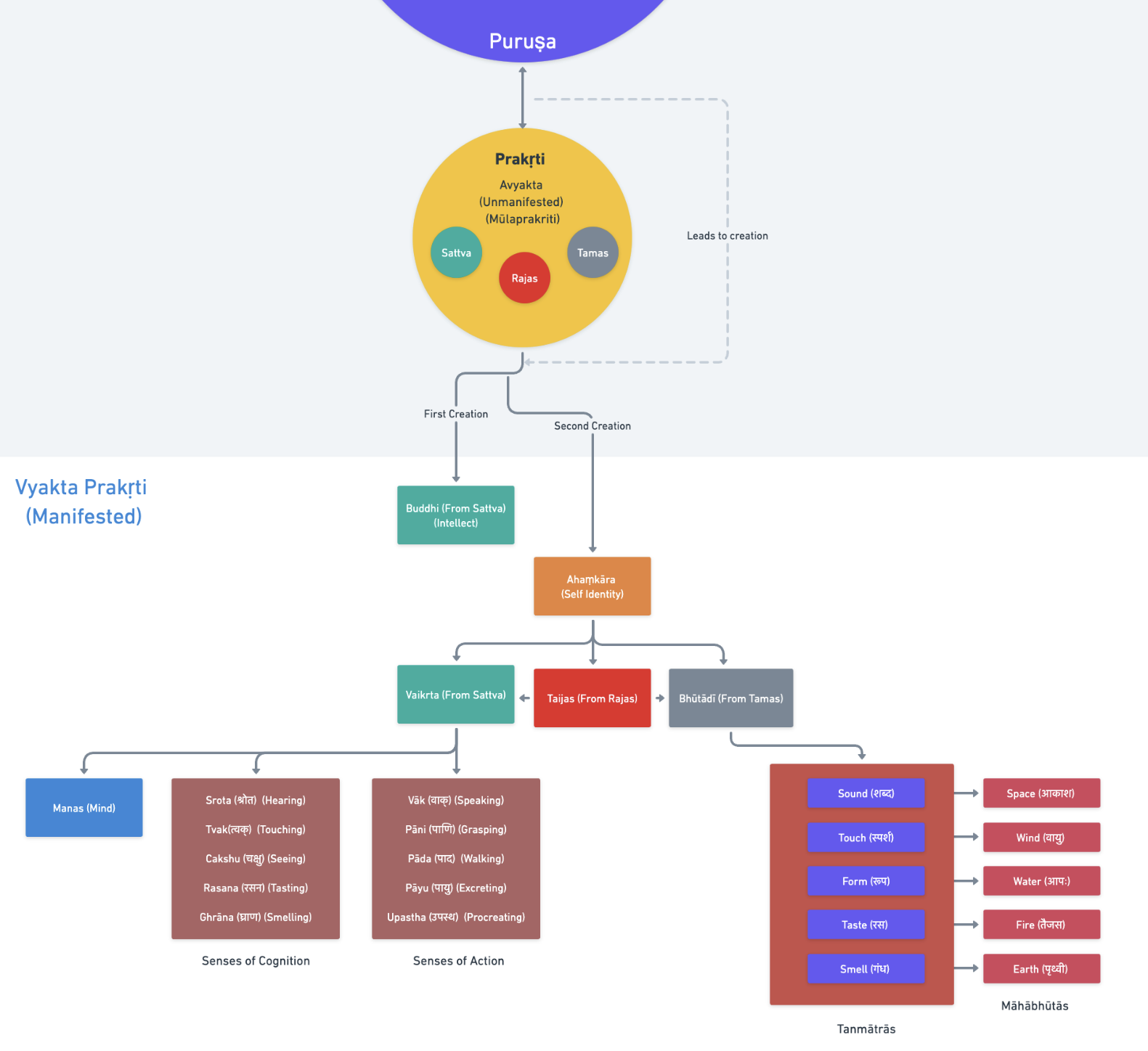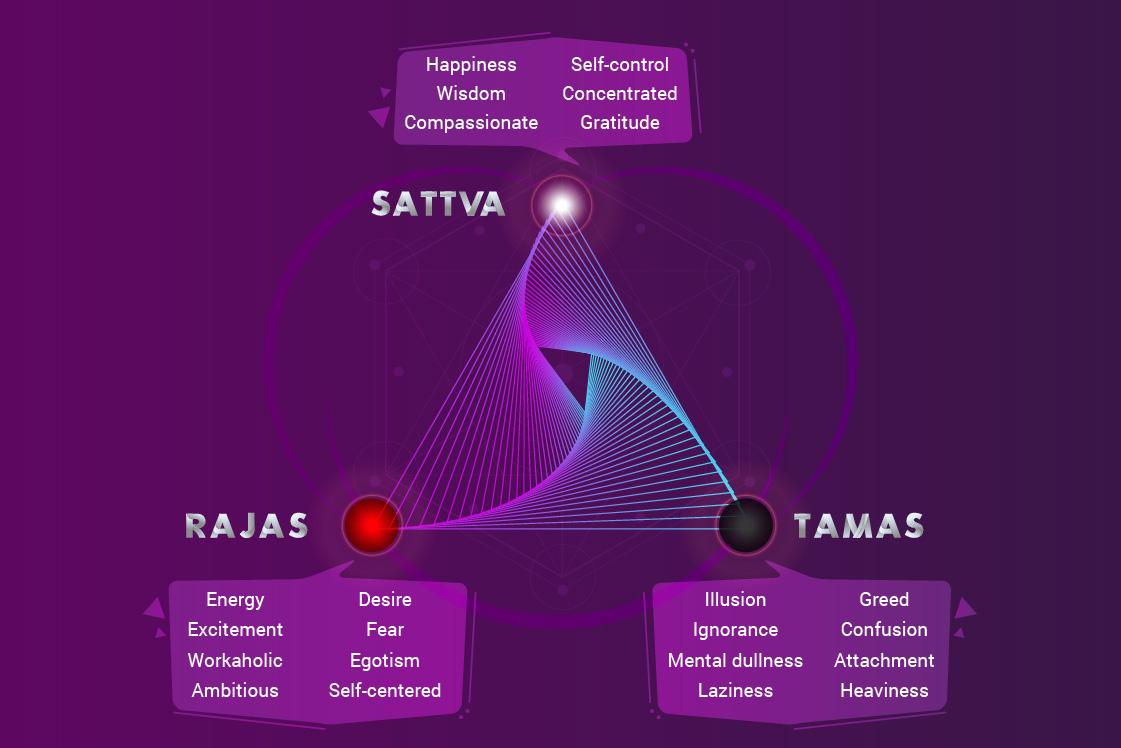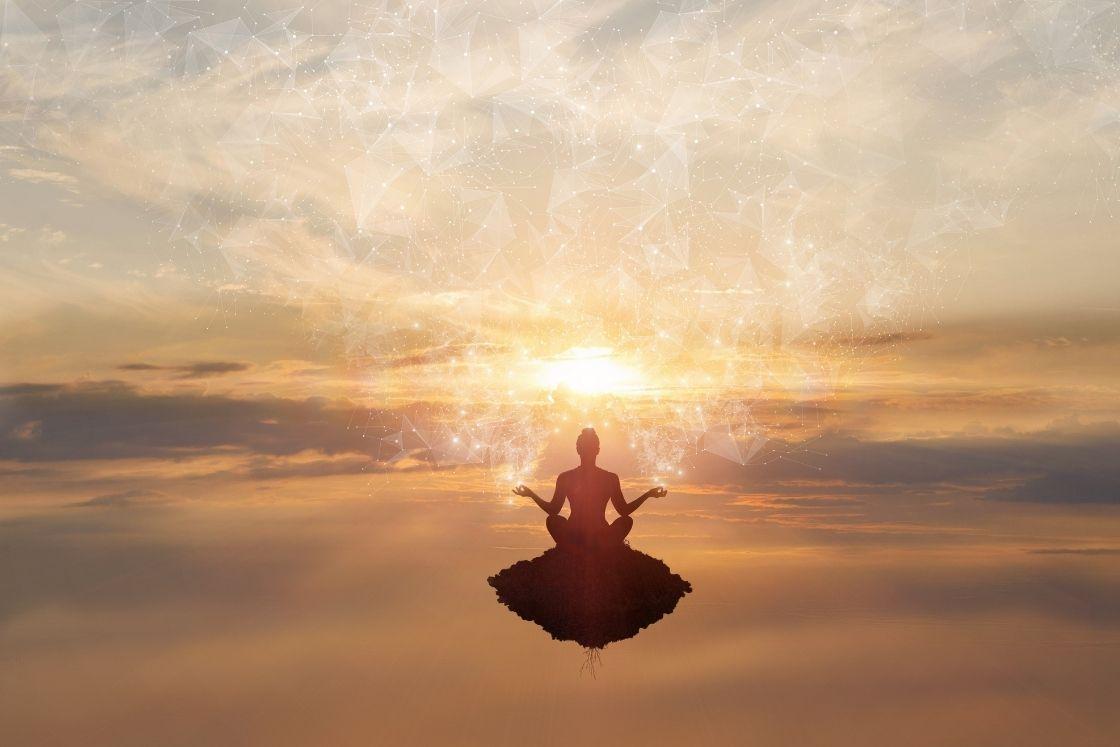Sankhya approach of Indian Philosophy : A brief
Sankhya Approach to Philosophy
I. Core Concepts
- Dualistic System: Sankhya is a dualistic tradition that seeks to explain the world and the self through two fundamental entities: Prakriti and Purusha.
A. Prakriti
- Material Cause: Understood as the material cause of the world.
- Source of Creation: It is the source and origin of all matter in the world.
-
Changing Nature: Although eternal, Prakriti is subject to change and evolves over time.
- The various forms that we see are due to evolution of Prakriti.
B. Purusha
- Conscious Principle: It is the final cause of the world or the pure conscious principle that is behind all phenomena.
- Pure Consciousness: It is pure consciousness with no physical attributes or limbs.
- Sentient & Changeless: It is sentient and unchangeable
- Eternal & Passive: It is eternal and does not engage in any action
- It is considered to be the ‘final’ cause (teleological) of Prakriti, similar to the way the potter commissions a pot.
- The world (Prakriti) exists for the Purusha
II. The Theory of Tri-gunas
- Fundamental Qualities: Sankhya posits three fundamental qualities or gunas: Sattva, Rajas, and Tamas.
- Known via Inference: Their existence is known via inference through their effects, they are not directly perceived.
- Not Parts of Prakriti: They are not components of Prakriti; rather they are Prakriti.
A. Sattva (Purity)
- Light or illuminating.
- Responsible for illuminating and clarity of thought.
- Associated with pleasurable thoughts and actions.
B. Rajas (Activity)
- Associated with motion and excitement.
- Causes restlessness and painful feelings.
- Actions that are propelled by Rajas lead to agitation.
C. Tamas (Inertia)
- Heavy and concealing.
- Hides and conceals and causes indifference, lethargy and inaction.
D. Interaction of Gunas
- Though conflicting, these three gunas work together to create the world and its phenomena (similar to oil and wick in a lamp).
- When the gunas are in equilibrium, no evolution occurs.
III. Evolution (Parinama)
- Prakriti and Purusha: Evolution begins when Prakriti and Purusha come into contact.
- First Evolute: Mahat (Buddhi): This is the principle of discrimination and enables cognition.
-
Ahankara: Arises from Mahat, this is the sense of I or Ego or the self.
- It is responsible for creating a sense of owning cognitions and objects.
- Gives rise to further categories of entities.
A. Evolutes from the Tamasic Side of Ahankara
- Tanmatras (Subtle Elements): Responsible for the five senses.
-
Five Elements (Pancha Bhutas): The five elements: Fire (sight), Earth (smell), Water (taste), Air (touch), and Akasha (sound) are derived from the Tanmatras.
- Akasha, the source of sound, is often mistranslated as space, ether or sky.
B. Evolutes from the Sattvic Side of Ahankara
-
Manas: Often translated as mind, responsible for cognition.
- It synthesizes input from the sense organs.
- Five Sense Organs: Developed from Sattvic side of Ahankara and are not physical organs like the eyes, ears, or tongue but the sense associated with them.
- Five Organs of Action: Also come from the Sattvic side of Ahankara, responsible for actions such as speech, grasping, motion, reproduction and excretion.
IV. Liberation (Kaivalya)
- Cause of Mundane Existence: The identification of Purusha with Prakriti and it’s evolutes leads to mundane existence and the samsara chakra.
- Liberation: Happens when the Purusha is freed from its identification with Prakriti and all of its evolutes.
- Discriminative Knowledge: This liberation is achieved by gaining discriminative knowledge about the distinction between Purusha and Prakriti.
-
Kaivalya: The state of liberation is called Kaivalya, which refers to the complete freedom of the Purusha from the conditioning of Prakriti.
- The term Kaivalya Jnana is used to denote that liberation has been attained.
V. Conclusion
- The Sankhya system proposes an analytical framework for understanding the world through dualism of Purusha and Prakriti.
- Understanding the three gunas and the theory of evolution of matter provides a unique insight.
- Liberation is attained through right knowledge of Purusha and Prakriti and separating Purusha from Prakriti.



